Do you have a question about the Bounty Hunter pioneer 101 and is the answer not in the manual?
Detector requires motion for detection; sweep coil level and slowly, adjusting sensitivity for chatter.
Dig only repeatable tones; avoid non-repeatable signals. Use alkaline batteries and test outdoors.
Easy to use with minimal skill, delivering effective performance across various conditions.
Eliminates difficult tuning and ground balancing, making operation automatic.
Detects in extreme conditions like salt and black sand without operator adjustments.
Secure the search coil to the lower stem using the supplied bolt and knurled knob.
Adjust stem for comfortable posture, keeping arm relaxed and coil 1/2 inch above ground.
Wind cable around stem, leaving slack, and plug it into the control housing connector.
Do not force plugs; pull plugs, not cables, to disconnect to prevent damage.
Use only new alkaline batteries (two 9-Volt) for optimal performance and proper operation.
Check batteries for issues like unit not turning on or low speaker volume.
Light stays on when batteries need replacing; flashes momentarily when power is off.
Remove door, snap batteries onto terminals, and replace door carefully.
Gather coins, foil, and a nail; place detector on a table away from metal objects.
Set Discriminate to LOW, Toggle Switch to Middle, Sensitivity to 3/4.
Wave objects over coil and notice the single tone for all metal types.
Set switch to TONE, Discriminate to 2:00; notice different tones for different metals.
Set switch to DISC, Discriminate to LOW; notice metals rejected and tones at different settings.
The search coil must be moving to detect metal; stationary objects are not detected.
Detects all metal types; suitable for relic hunting, gold prospecting, and general use.
Rejects most trash items; adjust Discriminate control higher to increase rejection range.
Uses dual tones for metal identification and automatic iron rejection; good for coinshooting.
Low tone for iron/steel, broken tone for pull-tabs, high tone for copper/silver/brass.
Higher Discriminate increases low tone range; set for nickels (low), larger coins (high), pull-tabs (broken).
Operate in All Metal mode with Discriminate counterclockwise and Sensitivity at highest without chatter.
Allows operation at full power in all soil conditions, regardless of mineral content.
Turn on using the left knob; detector remains silent until metal passes under the coil.
Turn knob clockwise to increase sensitivity; reduce slightly if unit chatters or beeps erratically.
Operate with sensitivity as high as possible, especially in Full Discriminate or Tone Discriminate modes.
Stand comfortably, arm extended slightly, with search coil about 1/2 inch above and parallel to ground.
Sweep coil slowly side-to-side, overlapping sweeps, keeping it 1/2 inch above ground.
Good objects give repeatable tones; trash signals are often broken or non-repeatable.
Sweep coil in a narrowing pattern, note spot where beep occurs, then move coil forward/back.
Mark the exact spot where the beep occurs; 'X' the target at different angles for accuracy.
Lift coil for strong signals; use short, quick sweeps closer to ground for weak signals.
Reduce sensitivity if unit emits false signals; slow sweeps help. Rusted metals may cause some ghost signals.
May occur near other detectors or power lines interfering with the detector's frequency.
Usually indicates low batteries; replace with new alkaline batteries.
Keep detectors at least 20ft apart to prevent interference and erratic signals.
Handle gently to avoid damage; store in normal temperature environments.
Wipe with a damp cloth; do not use harsh chemicals, solvents, or strong detergents.
Coil is waterproof; rinse with fresh water after use in salt water to prevent corrosion.
Set Sensitivity high, Discriminate to 3/4, Toggle to DISC; eliminates silver, copper, brass.
Set Sensitivity high, Discriminate to LOW, Toggle to ALL METAL; detects iron relics.
Set Discriminate to OFF (counterclockwise), Toggle to ALL METAL; maximize sensitivity.
Set Discriminate to 12:00, Toggle to TONE; look for solid low and high tones.
Set Discriminate to OFF (counterclockwise), Toggle to ALL METAL; dig repeatable signals.
Respect property, laws, treasures; leave land as found, fill holes, and cover your holes.
Five-year limited warranty against defects in workmanship or materials under normal use.
| Brand | Bounty Hunter |
|---|---|
| Model | pioneer 101 |
| Category | Metal Detector |
| Language | English |


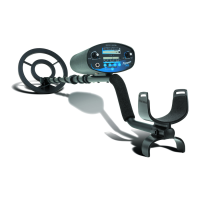
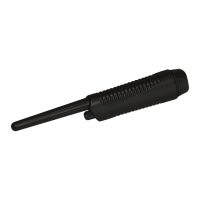
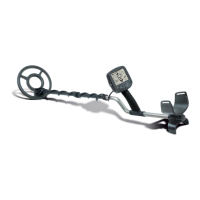


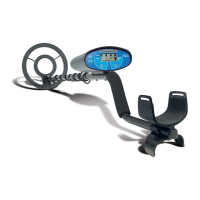
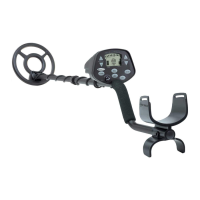
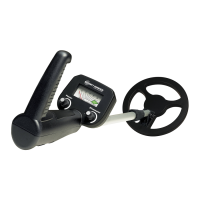
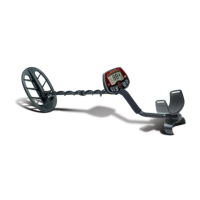
